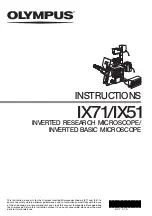
Version:
1.0
Modified: February 2015
Products: Atomic Force Microscope attoAFM I
User Manuals
Atomic Force Microscope
attoAFM I/MFM/KPFM
P5788
atto
cube
systems AG, Königinstrasse 11 A, D - 80539 München Germany
Phone: +49 89-24208888 Fax: +49 89-24208890
E-Mail: [email protected] www.attocube.com
For technical queries, contact:
[email protected]
atto
cube
systems office Munich:
Phone
+49 89 2877 80915
Fax
+49 89 2877 80919


































